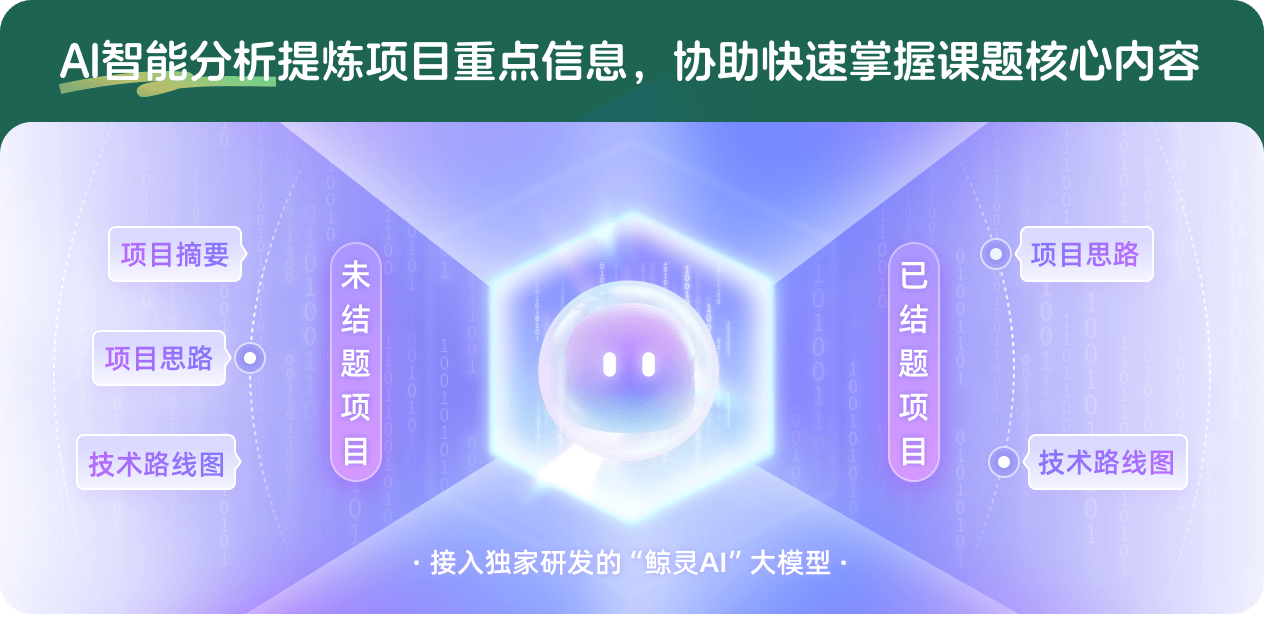构建三维中空类肺泡模型用于环境金属基纳米粒肺滞留效应的研究
项目介绍
AI项目解读
基本信息
- 批准号:21806116
- 项目类别:青年科学基金项目
- 资助金额:25.0万
- 负责人:
- 依托单位:
- 学科分类:B0607.环境毒理与健康
- 结题年份:2021
- 批准年份:2018
- 项目状态:已结题
- 起止时间:2019-01-01 至2021-12-31
- 项目参与者:崇羽; 李威; 吴荻; 潘艳霞;
- 关键词:
项目摘要
A variety of environmental metal-based nanoparticles exhibited high inhalation exposure risk and induced severe hazard effects in humans. The retention of environmental nanoparticles in pulmonary alveoli plays an important role in lung diseases. Since traditional 2D cell culture model fails to provide a three-dimensional (3D) bio-environment, animal experiments are often used for bio-persistence studies of nanoparticles. However, the animal studies are extremely time and labor consuming. It has become a big challenge to explore an in vitro model for bio-persistance evaluation of diverse environmental nanoparticles in pulmonary alveoli. Three-dimensional organoids have shown advantages in simulation of the physiological structure and bio-functions of organs. Based on our previous studies on alginate microcapsules as 3D cell culture carrier, we made following hypothesis that engineered 3D hollow alveolar model could be used for the pulmonary bio-persistance evaluation of metal-based nanoparticles. This project has two aims: 1) engineering alginate-chitosan microcapsules by encapsulation of macrophages inside and adsorption of epithelial cells on the surfaces to form 3D hollow alveolar structures; 2) studying the relationship between the physicochemical properties of nanoparticles and their lung bio-persistance using the established 3D model. This project will pioneer a 3D hollow alveolar model to investigate the lung bio-persistance of nanoparticles, which could potentially become a new approach for respiratory toxicity studies and expand our understanding on environmental nanotoxicology.
我国环境中释放的金属基纳米颗粒种类繁多,呼吸暴露风险高,危害严重。纳米颗粒在肺组织中的滞留是造成其病变的关键因素。由于传统的体外细胞培养无法模拟组织器官的空间结构和三维环境,目前多采用动物模型研究纳米颗粒的肺滞留效应,然而其评价效率低、成本高。因此,如何实现纳米颗粒肺滞留效应的体外评价是环境纳米毒理学中亟需解决的难题。三维微组织可以模拟体内器官的三维环境和功能,申请人基于前期三维凝胶微囊的研究基础,提出以下假设:构建三维中空类肺泡模型可用于环境纳米颗粒肺滞留效应的体外评价。本项目拟利用海藻酸-壳聚糖微胶囊构建内部包封巨噬细胞、表面粘附单层肺上皮细胞的三维中空类肺泡模型;利用该模型考察纳米颗粒理化性质与肺滞留的相互关系,揭示肺滞留效应在纳米肺毒性中的作用机制。本项目的成功实施有望填补纳米颗粒肺滞留效应体外评价体系的空白,为其呼吸毒性的研究提供新方法,拓展环境纳米毒理学的理论体系。
结项摘要
如何探索环境纳米颗粒物的肺滞留行为是其毒代动力学研究的关键科学问题。本项目通过构建三维肺微组织研究纳米颗粒在肺组织中的滞留行为,揭示不同纳米材料肺滞留规律及肺毒性机制。获得以下主要结果和结论:首先,通过海藻酸钙凝胶微球包埋肺上皮细胞和肺免疫细胞构建三维肺微组织模型。利用该模型探索9种不同理化性能纳米材料的滞留行为,发现稀土氧化镧纳米材料具有强肺滞留效应;通过荧光及放射性核素标记方法,验证了该模型在体外预测肺滞留效应的准确性;利用SPECT-CT成像观察发现氧化镧纳米材料可以在小鼠肺部滞留超过18天。其次,本项目揭示了磷酸化生物转化性能是决定稀土氧化镧纳米材料肺滞留效应的关键因素。最后,研究发现稀土氧化纳米颗粒物在肺部滞留过程中特异性引发革兰氏阴性菌活性降低,导致阴性菌和阳性菌的比例下降超过30%。进一步研究显示稀土氧化纳米诱导肺部菌群失衡,进而协同诱发肺部炎症及纤维化产生的肺毒理学机制。本研究具有以下三个方面科学意义:①三维肺微组织模型的成功构建为纳米颗粒物的肺滞留效应提供体外预测平台;②放射性核素标记纳米材料方法的开发,为纳米材料在体内的代谢动力学研究提供技术方法;③聚焦肺部菌群提出环境颗粒物引发的新型毒理学机制,为环境污染颗粒物的毒理研究及防护策略的开发提供新方向。
项目成果
期刊论文数量(4)
专著数量(0)
科研奖励数量(0)
会议论文数量(0)
专利数量(1)
Engineered Graphene Oxide Nanocomposite Capable of Preventing the Evolution of Antimicrobial Resistance
工程氧化石墨烯纳米复合材料能够防止抗菌素耐药性的演变
- DOI:10.1021/acsnano.9b04970
- 发表时间:2019
- 期刊:ACS Nano
- 影响因子:17.1
- 作者:Zheng Huizhen;Ji Zhaoxia;Roy Kevin R;Gao Meng;Pan Yanxia;Cai Xiaoming;Wang Liming;Li Wei;Chang Chong Hyun;Kaweeteerawat Chitrada;Chen Chunying;Xia Tian;Zhao Yuliang;Li Ruibin
- 通讯作者:Li Ruibin
Exploring the interactions between engineered nanomaterials and immune cells at 3D nano-bio interfaces to discover potent nano-adjuvants
探索工程纳米材料与免疫细胞在 3D 纳米生物界面上的相互作用,以发现有效的纳米佐剂
- DOI:10.1016/j.nano.2019.102037
- 发表时间:2019-10-01
- 期刊:NANOMEDICINE-NANOTECHNOLOGY BIOLOGY AND MEDICINE
- 影响因子:5.4
- 作者:Ma, Ronglin;Zheng, Huizhen;Li, Ruibin
- 通讯作者:Li, Ruibin
Biotransformation of rare earth oxide nanoparticles eliciting microbiota imbalance.
稀土氧化物纳米颗粒引发微生物群的生物转化
- DOI:10.1186/s12989-021-00410-5
- 发表时间:2021-04-26
- 期刊:Particle and fibre toxicology
- 影响因子:10
- 作者:Zheng H;Gu Z;Pan Y;Chen J;Xie Q;Xu S;Gao M;Cai X;Liu S;Wang W;Li W;Liu X;Yang Z;Zhou R;Li R
- 通讯作者:Li R
Nanoparticle-induced ferroptosis: detection methods, mechanisms and applications
纳米颗粒诱导的铁死亡:检测方法、机制和应用
- DOI:10.1039/d0nr08478f
- 发表时间:2021
- 期刊:Nanoscale
- 影响因子:6.7
- 作者:Zheng Huizhen;Jiang Jun;Xu Shujuan;Liu Wei;Xie Qianqian;Cai Xiaoming;Zhang Jie;Liu Sijin;Li Ruibin
- 通讯作者:Li Ruibin
数据更新时间:{{ journalArticles.updateTime }}
{{
item.title }}
{{ item.translation_title }}
- DOI:{{ item.doi || "--"}}
- 发表时间:{{ item.publish_year || "--" }}
- 期刊:{{ item.journal_name }}
- 影响因子:{{ item.factor || "--"}}
- 作者:{{ item.authors }}
- 通讯作者:{{ item.author }}
数据更新时间:{{ journalArticles.updateTime }}
{{ item.title }}
- 作者:{{ item.authors }}
数据更新时间:{{ monograph.updateTime }}
{{ item.title }}
- 作者:{{ item.authors }}
数据更新时间:{{ sciAawards.updateTime }}
{{ item.title }}
- 作者:{{ item.authors }}
数据更新时间:{{ conferencePapers.updateTime }}
{{ item.title }}
- 作者:{{ item.authors }}
数据更新时间:{{ patent.updateTime }}
其他文献
PEG (polyethylene glycol) in-situ covalent grafted alginate microcapsule as well as preparation and application thereof
PEG(聚乙二醇)原位共价接枝海藻酸盐微胶囊及其制备和应用
- DOI:--
- 发表时间:2014
- 期刊:
- 影响因子:--
- 作者:马小军;刘晓岑;谢红国;于炜婷;任英;郑会珍;高梦
- 通讯作者:高梦
其他文献
{{
item.title }}
{{ item.translation_title }}
- DOI:{{ item.doi || "--" }}
- 发表时间:{{ item.publish_year || "--"}}
- 期刊:{{ item.journal_name }}
- 影响因子:{{ item.factor || "--" }}
- 作者:{{ item.authors }}
- 通讯作者:{{ item.author }}

内容获取失败,请点击重试

查看分析示例
此项目为已结题,我已根据课题信息分析并撰写以下内容,帮您拓宽课题思路:
AI项目摘要
AI项目思路
AI技术路线图

请为本次AI项目解读的内容对您的实用性打分
非常不实用
非常实用
1
2
3
4
5
6
7
8
9
10
您认为此功能如何分析更能满足您的需求,请填写您的反馈:
相似国自然基金
{{ item.name }}
- 批准号:{{ item.ratify_no }}
- 批准年份:{{ item.approval_year }}
- 资助金额:{{ item.support_num }}
- 项目类别:{{ item.project_type }}
相似海外基金
{{
item.name }}
{{ item.translate_name }}
- 批准号:{{ item.ratify_no }}
- 财政年份:{{ item.approval_year }}
- 资助金额:{{ item.support_num }}
- 项目类别:{{ item.project_type }}




















